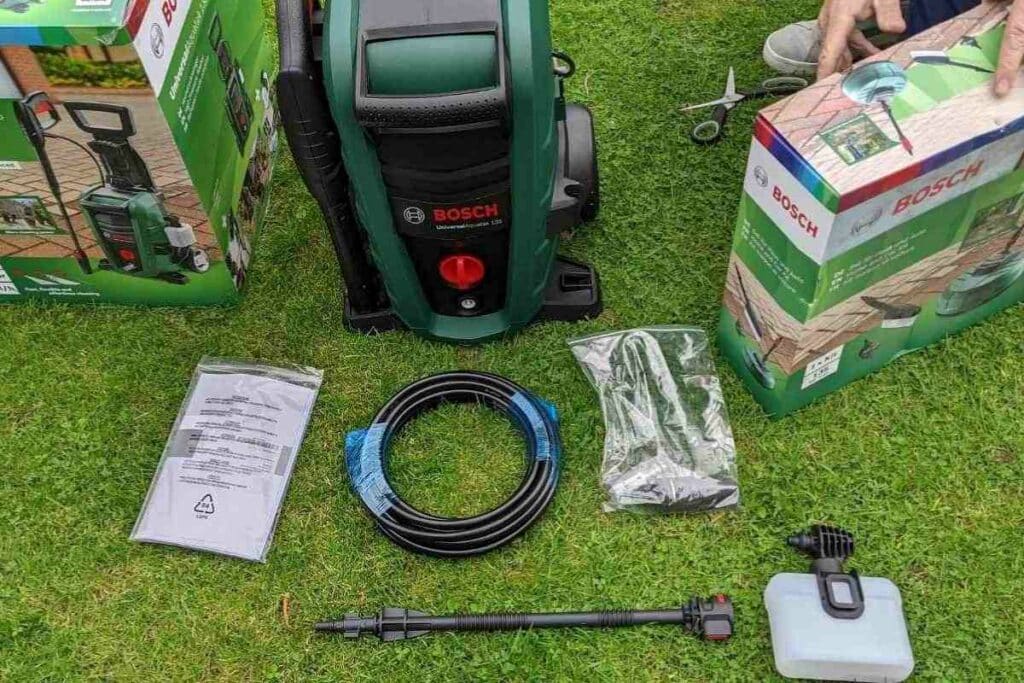Spending your time at home can sometimes get boring.
However, this is usually the best time to get creative and tend to your garden or make a relaxing space like a hammock to help you pass the time.
Hammocks are a fabulous addition to any outdoor space.
After all, they have an excellent visual appeal, are lovely to spend time in, and, better yet, allow you to sleep comfortably by putting you in an optimal position.

Moreover, hammocks are portable, allowing you to carry them wherever you go, be it on a beach or a mountain.
That said, you need to clean your hammock regularly to keep it in pristine condition.
Get Ready: Most models can withstand a fair amount of rain and dirt, they require a little bit of maintenance. Failing to do this shortens its life and renders it unusable. Below are some tips on how to take care of your hammock.
How to Clean a Fabric Hammock
When cleaning a fabric hammock, start by laying it on a flat surface, preferably the ground.
This positioning makes it easier to scrub thoroughly:
- Use a dry bristle brush to scrub both sides, as this removes the dirt, mildew spores, and pollen stuck in the fabric.
- Ensure that you don’t breathe in the mildew spores while cleaning by wearing a protective mask.
- To make the cleaning solution, mix a cup of borax with eight cups of water.
It’s advisable to add liquid soap to increase the potency of the solution.
If your hammock has a lot of mildew, it helps if you apply hydrogen peroxide to the affected area.
It’s vital to clean both sides of your hammock:
- Scrub either side and ensure that you rinse thoroughly after the process is complete.
- Then, dry it in a raised position to reduce the risk of growing mildew.
- Once it’s dry, apply an outdoor protectant on both sides of the hammock to protect the material from UV rays, prevent stains and add waterproofing capabilities.
If you’re allergic, use a cordless vacuum to remove pollen before you start using your hammock.
How to Clean a Rope Hammock
Rope hammocks are typically heavier than fabric hammocks.
They also have wooden spreader bars on both ends, meaning that you can’t wash them using a machine.
You can only clean them using your hands:
- Start by placing your hammock in a child’s wading pool filled with water. While doing this, try to keep the spreader bars out of the water by resting them on the pool’s edges.
- Then, let the hammock soak thoroughly in the water.
- Next, add oxygenated bleach to the water. Ensure that you follow the instructions that come with the bleach to know the amount you need to apply.
- Let the hammock soak in soapy water for at least one hour. Using your hands, grasp as much rope as you can and rub them against each other. Repeat this until the whole hammock is clean. If some parts have mildew or stains, pay extra attention to them.
- Rinse the hammock using a garden hose and wipe the spreaders using a clean piece of cloth.
- After this, dry the hammock by spreading it on a flat and dry surface.
Depending on the prevailing weather conditions, mainly temperature, humidity, and wind, drying usually takes two days.
Avoid This: You can dry the hammock as if you’re going to use it, but this is discouraged because it stretches the ropes.
How to Clean a Canvas Hammock
It’s worth noting that there are two types of canvas hammocks:
- those with removable spreader bars
- and those with non-removable spreader bars.
This feature determines the best way to clean your hammock.
If your hammock has removable spreader bars, you can clean it using a washing machine.
However, the machine has to be big enough to accommodate it. If not, you’ll have to take it to a laundromat.
Before you begin cleaning:
- Use a string to tie both ends of the hammock together. This prevents entanglement.
- Alternatively, you can clean a canvas hammock through hand washing. Here, you begin by folding it into two and tying both ends together.
- Then, place the hammock in a tub containing water and a mild detergent. Avoid using bleach, as this will damage your hammock.
- Use your hands to clean the canvas. Suppose it has stubborn stains; you can use a scrub brush. Ensure that the spreader bars don’t come into contact with the water.
The best way of cleaning a canvas hammock with non-removable spreader bars is by laying it on a flat surface.
Once you lay it down, scrub both sides using a soft bristle brush, paying more attention to stains and mildew. Then, re-hang it in its original position for it to dry.
How to Clean a Mayan (Mexican) Hammocks
Steps to be taken:
- Fold the hammock in half and hold the two hanging rings in your hands.
- Add strings below the rings to prevent tangling.
- Then, place the hammock in a bathtub or a large sink and add water and a mild detergent until it fills to the brim.
After washing, untie the hammock carefully and spread it out to dry.
Remember This: Avoid storing the hammock before it’s dry. Ensure that you fold it and keep it in a breathable waterproof bag. Folding makes it easier to store the hammock, especially in smaller spaces.
How to Wash a Nylon Hammock
Nylon is a thin material that is vulnerable to damage if washed using harsh cleaners.
Also, it helps to remove attached ropes and carabiners before you start the cleaning process.
If you choose to work with a machine:
- Ensure that you use cold water and a mild detergent.
- Never use a fabric softener, as this weakens nylon.
- Avoid using a brush when cleaning your nylon hammock. If it has stains or stubborn dirt, agitate the soapy water using your hands.
Another thing to avoid is putting your nylon hammock in a dryer.
Since it dries quickly, you can hang your hammock indoors, and it will be ready for use in less than an hour.
What to Avoid When Cleaning a Garden Hammock
Here are some practices you need to avoid when cleaning your garden hammock.
Using a Pressure Washer
Some people use a pressure washer when cleaning hammocks, as they believe that this makes the process faster and more effective.
In reality, this isn’t the case.

Check out our review of the Bosch Aquatak pressure washer which would be perfect for the job.
A User’s Review
While most hammocks have a sturdy construction that supports a lot of weight, applying too much unevenly distributed pressure often causes damage.
This is why you need to use a garden hose.
If your hose produces water at high pressure, clean your hammock inside a bathtub, a sink, or a wading pool.
Configuring Your Washing Machine Wrongly
Another mistake that can damage your hammock is misconfiguring your washing machine.
Although most types of hammocks support machine washing, using the wrong settings can have adverse effects.
Such settings include ultra-fast spinning and high temperatures.
Besides: Using bleach and fabric softeners can damage your hammock. This is because such substances compromise the structure of the material used in your hammock’s construction.
Machine Washing with Other Items
Whatever you do, never add other clothes into your washing machine when cleaning your hammock.

Doing this can damage both the hammock and your garments.
For instance, if you have a knitted hammock, it can trap and tear your outfits or shred them into small pieces.
For those with colored clothes, they might end up discoloring your hammock.
Folding Wet Hammocks
Always ensure that your hammock is dry before folding and storing it.
If your hammock doesn’t come with a breathable storage bag, keep it in a plastic bag.
Plastic is preferable to other materials because it protects the hammock from moisture.

Folding a wet hammock not only increases the chance of developing an unpleasant odor but also makes it more likely for mildew to grow.
Using ‘Hard’ Brushes
Like bleach and fabric softeners, hard brushes can damage your hammock. For this reason, it’s advisable to use a soft bristle brush when cleaning.
Moreover: You need to ensure that the hammock is wet on either side before washing it.
Wrapping Up
Swimming pools are a valuable addition to any outdoor space, but nobody wants to take a plunge every time.
This is why owning a hammock is a wise investment, as it allows you to relax and spend more time in your backyard.
The problem lies in keeping your hammock clean. Most models are versatile such that you can clean them using your hands or a washing machine.
However, using the wrong technique and equipment can result in a shrunk, torn, and unusable hammock.
Ideally, it would help if you washed your hammock at least once weekly to keep it in pristine condition.
Avoid using bleach and fabric softener to maintain the quality of the fabric. Also, never overexpose it to the sun, as this causes fading.
Lastly, ensure that it’s completely dry before storing it in a place free of moisture to prevent foul smells and mildew.
